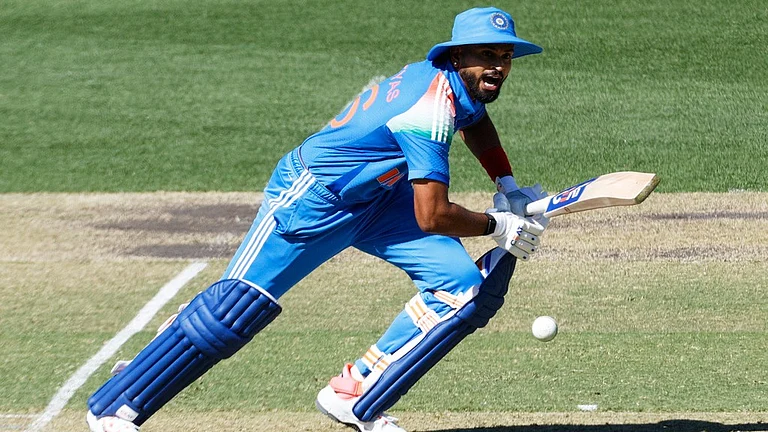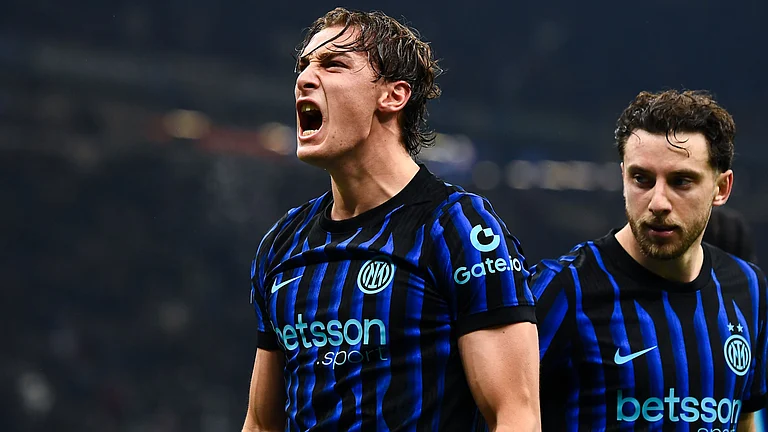The party has only one post, rest are all lamp posts, allege opponents while criticising the Trinamool Congress (TMC), West Bengal’s ruling party since 2011, for its Mamata Banerjee-centric existence. What after her, or rather who, has been a question that has long plagued TMC supporters and grassroots leadership. Responding to all these speculations, the TMC founder-chairperson, now 67, told a gathering of students and youth on February 2, 2018 that she had chalked out a plan for the next five generations to take the party ahead.
“We have a generation that will be in action for another two decades. I am preparing another three generations (of leadership). They will be operating for another three decades. I have been planning for 50 years. After me, Abhishek (Banerjee) and Suvendu (Adhikari) will build the next generations,” she had said.
Of the two young leaders of the party she referred to, Abhishek is her nephew, while Suvendu is a son of TMC veteran Sisir Adhikari. In 2018, Abhishek was 31-year-old and Adhikari was 47.
However, the smooth transition she was planning for, did not happen. Adhikari fell out with the party, presumably over Abhishek’s increasing clout in the organisation that led him to believe he would have to work under Abhishek in future. Adhikari joined the BJP in 2020 and his father, Sisir, and younger brother Dibyendu, still officially TMC Lok Sabha MPs from their home district of East Midnapore, have no relation with the party since then.
Meanwhile, Abhishek’s position has further consolidated in the party hierarchy, following a chain of events that included ups and downs.
Second-rung leadership
Always wary of succession-related troubles and of keeping a grip over the party, the TMC supremo kept a group of leaders in her next rank together. In the first eight turbulent years of the party, the likes of Ajit Panja, Pankaj Banerjee, Sudeep Bandyopadhyay, Subrata Mukherjee and Akbar Ali Khondkar were among the leading faces of her party, though Mukul Roy and Subrata Bakshi, two of her closest aides, held the two crucial party positions—all India general secretary and state unit president, respectively. All of Panja, Banerjee, Bandyopadhyay and Mukherjee had fallen in and out of the leader’s favour at one point of time or the other.
From 2006, the second-rung was primarily made up of Roy, Bakshi and Partha Chatterjee. This started changing in 2014, when Abhishek arrived.
To facilitate Abhishek’s entry into politics, Mamata Banerjee, after coming to power in 2011, launched Yuva, a parallel outfit of the party’s formal youth wing, Trinamool Youth Congress (TMYC), which was then being headed by Adhikari, arguably the party’s most-popular youth leader then. Yuva-head Abhishek became a Lok Sabha MP from one of the party’s safest seats, Diamond Harbour, in 2014.
After that, she promoted Adhikari to the party’s state committee, and then in October 2014, merged Yuva with TMYC, putting Abhishek at the helm of TMYC’s affairs.
According to a veteran TMC MLA who did not want to be identified, the October 2014 reorganisation sowed the seeds of two future rebellions that would cost the party to a great extent—that of Roy and Adhikari.
After Roy’s exit in 2017, Abhishek gradually filled up his vacancy in the party’s core organisational affairs. Adhikari also enjoyed significant power, being minister of multiple departments and in-charge of several district units.
That changed after the party’s 2019 Lok Sabha election debacle, when its tally fell to 22, from 34 in 2014. Abhishek convinced Mamata Banerjee to rope in political consultant Prashant Kishor’s organisation, the Indian Political Action Committee or I-PAC to help regain lost ground.
I-PAC worked mostly in coordination with Abhishek’s office. When the party started making organisational changes based on I-PAC’s suggestions, Adhikari found his influence reduced further.
“Kishor first alerted the party that Adhikari was keeping in touch with the BJP top brass. This was the reason why Adhikari’s influence on the party’s organisation was being cut down,” a TMC Lok Sabha MP said, adding, “However, we can almost certainly say that Abhishek’s rise was the reason he was keeping in touch with the BJP, exploring options outside the party.”
Adhikari later emerged as a giant killer, when he defeated Mamata Banerjee, who came to contest from Suvendu’s home turf, Nandigram, in the 2021 assembly elections. Her party’s massive victory ensured her third term in the government, but not before Adhikari had become the new state leader of the Opposition. Banerjee, meanwhile, promoted Abhishek to the post of all-India general secretary, which was held by Bakshi since Roy’s exit.
According to columnist Udayan Bandyopadhyay, who teaches political science at Bangabasi College in Calcutta, Banerjee has always been conscious about the future of her party in her absence.
“She has been handling the generational transfer of power quite ably, without much trouble like seen in many regional parties, for example the Telugu Desam Party, Samajwadi Party or Shiv Sena. She has always ensured the existence of a collective leadership in her immediate next rank, and continues to maintain it. Apart from Abhishek, she has also identified a set of young leaders whom she keeps naming in her public speeches,” Bandyopadhyay said.

Abhishek’s ups and downs
Since arriving at the political scene, the junior Banerjee has only risen up the party ranks. But a quasi-rebellion he was reportedly planning to orchestrate earlier this year, prompted the TMC supremo to restrain her nephew, even if by a little.
After he told a TV channel that he would ensure the implementation of the ‘one-person one-post’ policy across party ranks as long as he was the all-India general secretary, Mamata Banerjee dissolved all TMC committees. According to TMC leaders who wanted to remain unnamed, Abhishek’s targets were the likes of Partha Chatterjee and Firhad Hakim, both of whom held important organisational posts as well as ministerial portfolios.
In the reconstituted national executive of the party, the chief minister added Bakshi as another all-India general secretary, while Hakim was given charge of coordinating between the national executive and the chairperson, and Chatterjee continued to be the party’s general secretary and head of its disciplinary committee, besides holding four important ministerial portfolios.
“She made it evident that she wanted Abhishek to be part of the collective leadership,” said a veteran TMC MLA from Calcutta. “It was more of a message to other second-rung leaders—they need not worry about Abhishek,” says a Bengal minister who wanted to remain unnamed.
In the collective leadership that emerged through the recent reshuffles, apart from Abhishek, Bakshi and Hakim, ministers Chandrima Bhattacharya and Aroop Biswas have found growing importance.
However, with Chatterjee’s recent arrest in connection with the recovery of over Rs 50 crore in cash, apart from properties worth another few crores from the possession of one of his close female associates, the table seems to have turned back in Abhishek’s favour.
Chatterjee was promptly removed from all ministerial and party positions. The reshuffle in the state cabinet and TMC ranks that followed carried the imprint of Abhishek’s pet ‘one-person one-post’ policy. Serampore district unit president Snehasis Chakraborty got a ministerial berth, but only after relinquishing his organisational post, while minister Soumen Mahapatra, who lost his position in the Cabinet, was made the East Midnapore district unit president.
(This appeared in the print edition as "Didi’s Succession Plan")


























